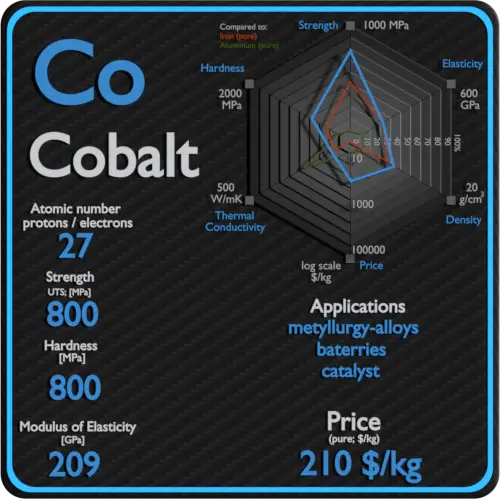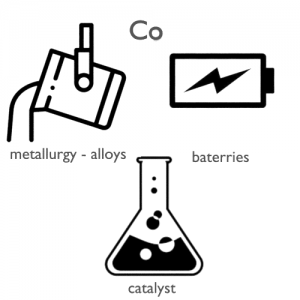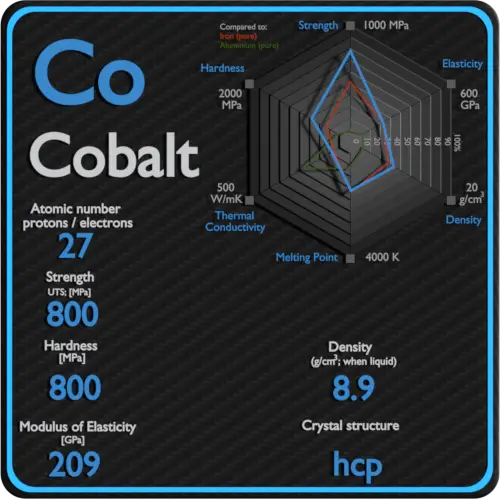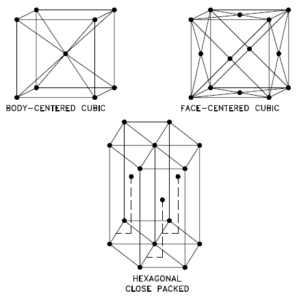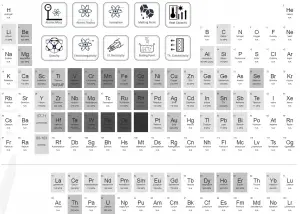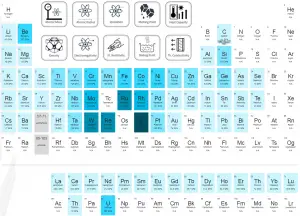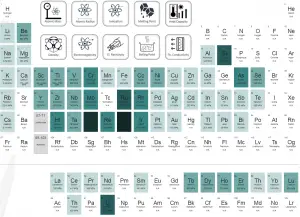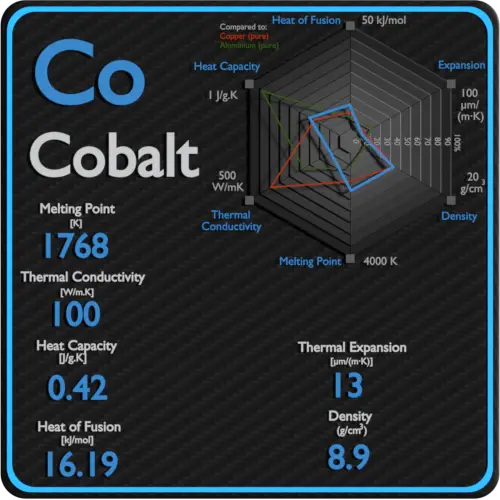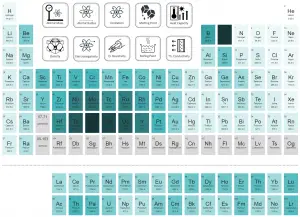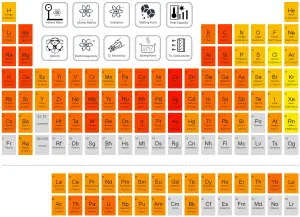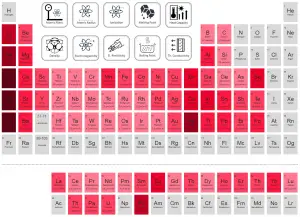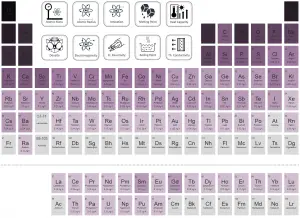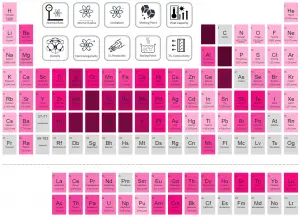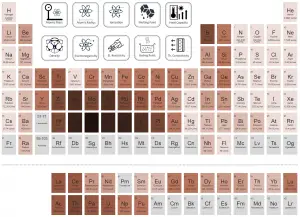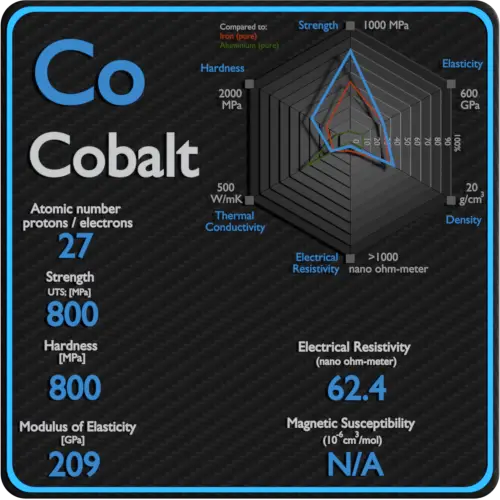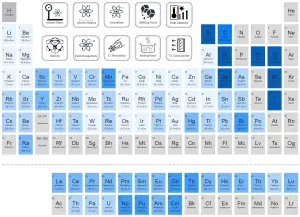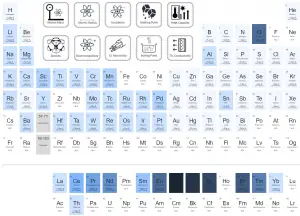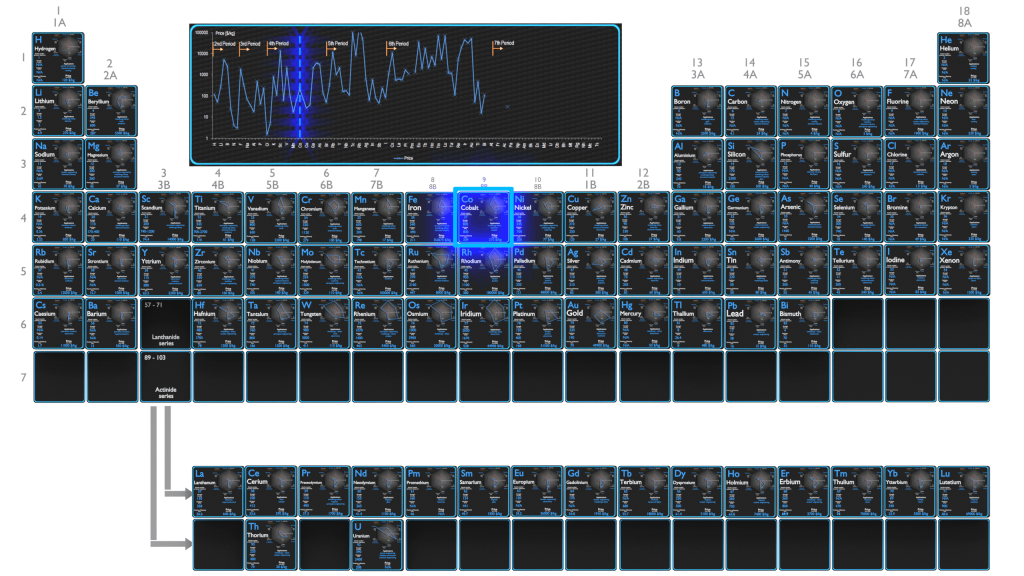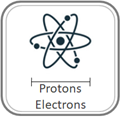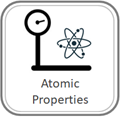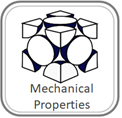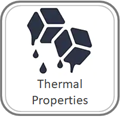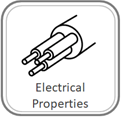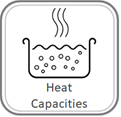About Cobalt
Cobalt is found in the Earth’s crust only in chemically combined form, save for small deposits found in alloys of natural meteoric iron. The free element, produced by reductive smelting, is a hard, lustrous, silver-gray metal.
Summary
| Element | Cobalt |
| Atomic number | 27 |
| Element category | Transition Metal |
| Phase at STP | Solid |
| Density | 8.9 g/cm3 |
| Ultimate Tensile Strength | 800 MPa |
| Yield Strength | 220 MPa |
| Young’s Modulus of Elasticity | 209 GPa |
| Mohs Scale | 5 |
| Brinell Hardness | 800 MPa |
| Vickers Hardness | 1040 MPa |
| Melting Point | 1495 °C |
| Boiling Point | 2927 °C |
| Thermal Conductivity | 100 W/mK |
| Thermal Expansion Coefficient | 13 µm/mK |
| Specific Heat | 0.42 J/g K |
| Heat of Fusion | 16.19 kJ/mol |
| Heat of Vaporization | 376.5 kJ/mol |
| Electrical resistivity [nanoOhm meter] | 62.4 |
| Magnetic Susceptibility | N/A |
Applications of Cobalt
Cobalt has been used in many industrial, commercial, and military applications. Cobalt is primarily used in lithium-ion batteries, and in the manufacture of magnetic, wear-resistant and high-strength alloys. Cobalt-based Superalloys. This class of alloys is relatively new. In 2006, Sato et al. discovered a new phase in the Co–Al–W system. Unlike other superalloys, cobalt-base alloys are characterized by a solid-solution-strengthened austenitic (fcc) matrix in which a small quantity of carbide is distributed. While not used commercially to the extent of Ni-based superalloys, alloying elements found in research Co-based alloys are C, Cr, W, Ni, Ti, Al, Ir, and Ta. They possess better weldability and thermal fatigue resistance as compared to nickel based alloy. Moreover, they have excellent corrosion resistance at high temperatures (980-1100 °C) because of their higher chromium contents. Several cobalt compounds are oxidation catalysts. Typical catalysts are the cobalt carboxylates (known as cobalt soaps). They are also used in paints, varnishes, and inks as “drying agents” through the oxidation of drying oils.
Production and Price of Cobalt
Raw materials prices change daily. They are primarily driven by supply, demand and energy prices. In 2019, prices of pure Cobalt were at around 210 $/kg.
In 2016, 116,000 tonnes of cobalt was used. The main ores of cobalt are cobaltite, erythrite, glaucodot and skutterudite (see above), but most cobalt is obtained by reducing the cobalt by-products of nickel and copper mining and smelting. Since cobalt is generally produced as a by-product, the supply of cobalt depends to a great extent on the economic feasibility of copper and nickel mining in a given market.
Source: www.luciteria.com
Mechanical Properties of Cobalt
Strength of Cobalt
In mechanics of materials, the strength of a material is its ability to withstand an applied load without failure or plastic deformation. Strength of materials basically considers the relationship between the external loads applied to a material and the resulting deformation or change in material dimensions. In designing structures and machines, it is important to consider these factors, in order that the material selected will have adequate strength to resist applied loads or forces and retain its original shape. Strength of a material is its ability to withstand this applied load without failure or plastic deformation.
For tensile stress, the capacity of a material or structure to withstand loads tending to elongate is known as ultimate tensile strength (UTS). Yield strength or yield stress is the material property defined as the stress at which a material begins to deform plastically whereas yield point is the point where nonlinear (elastic + plastic) deformation begins.
See also: Strength of Materials
Ultimate Tensile Strength of Cobalt
Ultimate tensile strength of Cobalt is 800 MPa.
Yield Strength of Cobalt
Yield strength of Cobalt is 220 MPa.
Modulus of Elasticity of Cobalt
The Young’s modulus of elasticity of Cobalt is 209 GPa.
Hardness of Cobalt
In materials science, hardness is the ability to withstand surface indentation (localized plastic deformation) and scratching. Brinell hardness test is one of indentation hardness tests, that has been developed for hardness testing. In Brinell tests, a hard, spherical indenter is forced under a specific load into the surface of the metal to be tested.
Brinell hardness of Cobalt is approximately 800 MPa.
The Vickers hardness test method was developed by Robert L. Smith and George E. Sandland at Vickers Ltd as an alternative to the Brinell method to measure the hardness of materials. The Vickers hardness test method can be also used as a microhardness test method, which is mostly used for small parts, thin sections, or case depth work.
Vickers hardness of Cobalt is approximately 1040 MPa.
Scratch hardness is the measure of how resistant a sample is to permanent plastic deformation due to friction from a sharp object. The most common scale for this qualitative test is Mohs scale, which is used in mineralogy. The Mohs scale of mineral hardness is based on the ability of one natural sample of mineral to scratch another mineral visibly.
Cobalt is has a hardness of approximately 5.
See also: Hardness of Materials
Cobalt – Crystal Structure
A possible crystal structure of Cobalt is hexagonal close-packed structure.
In metals, and in many other solids, the atoms are arranged in regular arrays called crystals. A crystal lattice is a repeating pattern of mathematical points that extends throughout space. The forces of chemical bonding causes this repetition. It is this repeated pattern which control properties like strength, ductility, density, conductivity (property of conducting or transmitting heat, electricity, etc.), and shape. There are 14 general types of such patterns known as Bravais lattices.
See also: Crystal Structure of Materials
Crystal Structure of Cobalt
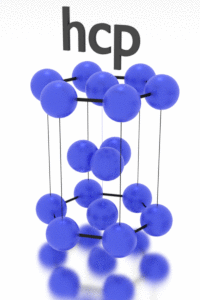
Thermal Properties of Cobalt
Cobalt – Melting Point and Boiling Point
Melting point of Cobalt is 1495°C.
Boiling point of Cobalt is 2927°C.
Note that, these points are associated with the standard atmospheric pressure.
Cobalt – Thermal Conductivity
Thermal conductivity of Cobalt is 100 W/(m·K).
The heat transfer characteristics of a solid material are measured by a property called the thermal conductivity, k (or λ), measured in W/m.K. It is a measure of a substance’s ability to transfer heat through a material by conduction. Note that Fourier’s law applies for all matter, regardless of its state (solid, liquid, or gas), therefore, it is also defined for liquids and gases.
Coefficient of Thermal Expansion of Cobalt
Linear thermal expansion coefficient of Cobalt is 13 µm/(m·K)
Thermal expansion is generally the tendency of matter to change its dimensions in response to a change in temperature. It is usually expressed as a fractional change in length or volume per unit temperature change.
Cobalt – Specific Heat, Latent Heat of Fusion, Latent Heat of Vaporization
Specific heat of Cobalt is 0.42 J/g K.
Heat capacity is an extensive property of matter, meaning it is proportional to the size of the system. Heat capacity C has the unit of energy per degree or energy per kelvin. When expressing the same phenomenon as an intensive property, the heat capacity is divided by the amount of substance, mass, or volume, thus the quantity is independent of the size or extent of the sample.
Latent Heat of Fusion of Cobalt is 16.19 kJ/mol.
Latent Heat of Vaporization of Cobalt is 376.5 kJ/mol.
Latent heat is the amount of heat added to or removed from a substance to produce a change in phase. This energy breaks down the intermolecular attractive forces, and also must provide the energy necessary to expand the gas (the pΔV work). When latent heat is added, no temperature change occurs. The enthalpy of vaporization is a function of the pressure at which that transformation takes place.
Cobalt – Electrical Resistivity – Magnetic Susceptibility
Electrical property refers to the response of a material to an applied electric field. One of the principal characteristics of materials is their ability (or lack of ability) to conduct electrical current. Indeed, materials are classified by this property, that is, they are divided into conductors, semiconductors, and nonconductors.
See also: Electrical Properties
Magnetic property refers to the response of a material to an applied magnetic field. The macroscopic magnetic properties of a material are a consequence of interactions between an external magnetic field and the magnetic dipole moments of the constituent atoms. Different materials react to the application of magnetic field differently.
See also: Magnetic Properties
Electrical Resistivity of Cobalt
Electrical resistivity of Cobalt is 62.4 nΩ⋅m.
Electrical conductivity and its converse, electrical resistivity, is a fundamental property of a material that quantifies how Cobalt conducts the flow of electric current. Electrical conductivity or specific conductance is the reciprocal of electrical resistivity.
Magnetic Susceptibility of Cobalt
Magnetic susceptibility of Cobalt is N/A.
In electromagnetism, magnetic susceptibility is the measure of the magnetization of a substance. Magnetic susceptibility is a dimensionless proportionality factor that indicates the degree of magnetization of Cobalt in response to an applied magnetic field.
